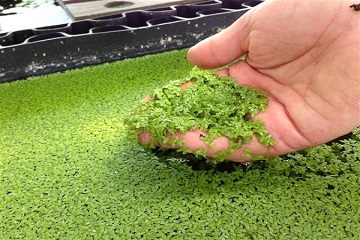Students of IPB Reduced the Heavy Metal Pollution with Azolla Plants

A research of the students of Bogor Agricultural University (IPB) found the innovation to overcome the heavy waste pollution. They were Aufa Zinda F, Alifda Qunur A, Ziyadatul Ulumil Adi Poernomo (Faculty of Agriculture), and Ridho Aaraasy (Faculty of Agricultural Technology) incorporated in Student Creativity Program for Research (PKM-P). The title of the research they raised was “TABS (Teknologi Azolla sp. dan Bakteri Pereduksi Sulfat) sebagai Bioremediasi Air Asam Tambang / TABS (Technology of Azolla sp. and Bacteria for Reducing Sulphate) as the Bioremediation of Mine Acid Water”.
“This research aims to reduce the waste resulting from the mine by using the azolla plant and the bacterial sulphate solvent. So that, later it is expected both can reduce the levels of the heavy metal in the mine acid water,” said Aufa.
Aufa said, Indonesia was one of the largest coal exporting countries in the world. In 2005 Indonesia ranked the second as the coal exporter. The mining sector had an impact as the source of the prosperity and the development of the country, but on the other hand the environmental impact became the main thing.
She also said, the high pollution of the heavy metal in Indonesia had begun to be felt as the impact by the community, so that the importance of the heavy metal control was to prevent the environmental ecosystem damage. The issue about the danger of the heavy metal pollution was widespread in the wider community, and the fact was true that the heavy metal could damage the body and the environment.
Bioremediation was one of the ways in which it was applied to reduce the heavy metal contamination with the help of the microorganisms, the green plants or the enzymes produced to restore the normal environmental condition. “The groups of the microorganisms that have the ability for the bioremediation are azolla and bacteria reducing the sulphate (BPS),” she said.
Azolla had the ability to clean the heavy metals (Hg and Cr) in the water and to accumulate it in the network, so that the water became pure. While BPS was able to perform the sulphate metabolism and to reduce it to the gas of Hydrogen Sulfide (H2S). So that, they could be used as the filter around the coal mine, before the former mine water was flowed into the river.
This research was conducted in the Laboratory of Soil Biotechnology and the Laboratory of Soil Chemistry, IPB. “The plants we use are selected which have the same relative sizes. Each plant is loaded into a trial pool containing the media of the mine acid water. Then later it is conducted the measurement based on the research parameter,” said Aufa.
Until now, Aufa and the team were still in the stage of completing this research. They hoped that with the combination of azolla with the bacteria reducing sulphate could overcome the post-mining waste and be able to work efficiently in tackling the problem of the mine acid water.(AT/NM)



